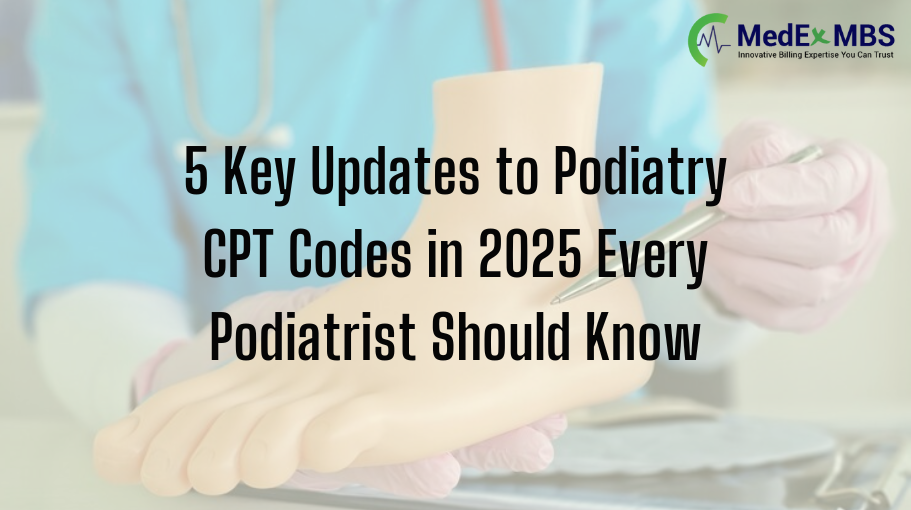Maximizing Reimbursement for New Patient Visits: CPT Code 99203

The 99203 code pertains to outpatient visits for new patients that necessitate a comprehensive history, examination, and low complexity decision-making. Correct application of this code will facilitate payment and prevent claims-related issues. This article will elucidate the components, time requirements, and frequent errors associated with the 99203 code, enabling you to utilize it accurately. Quick Hits The 99203 code is designated for new patient outpatient visits that demand a detailed medical history, examination, and low complexity medical decision-making for billing and compliance purposes. Accurate documentation of the essential components: patient history, physical examination, and medical decision-making is imperative for the application of CPT code 99203 and to ensure payment. Remaining informed about coding guidelines, reimbursement rates, and the application of modifiers such as 25 is crucial for precise billing and enhancing patient care and satisfaction. What is CPT Code 99203 CPT code 99203 is applicable for outpatient visits involving new patients that require a comprehensive medical history, examination, and low complexity medical decision-making. This code is relevant when the patient has not consulted the physician or another physician of the same specialty and group within the past three years, including other outpatient visit circumstances. This aspect is vital for coding and billing as it guarantees that the services rendered comply with the American Medical Association (AMA) standards. For the 99203 code, the necessary care components include a medically appropriate history, a detailed examination, and low complexity medical decision-making. These elements are essential to validate the code and receive payment for the services rendered. Grasping these components is crucial for coding and billing services and ensuring a seamless reimbursement process. The 99203 code serves as a fundamental element of medical coding that underpins the documentation and billing of initial patient visits. Proper utilization of this code guarantees coding compliance and enhances overall patient care by maintaining clear medical records. 99203 Components To bill under 99203, healthcare providers are required to document the following components. First, the patient’s medical history must be recorded, which includes: The patient’s chief complaint History of present illness Review of systems Past medical, family, and social history This serves as the foundation for understanding the patient’s current health status and potential risk factors. Next, a physical examination is necessary. It should be comprehensive, covering multiple organ systems, or a detailed examination of a single organ system if required. This examination provides a holistic view of the patient and aids in identifying any abnormalities that may require further investigation or treatment. The medical decision-making process for 99203 is classified as low complexity. This indicates that the decisions involved are not intricate. The provider must assess the patient, contemplate treatment options, and make decisions that are less complex than those associated with higher-level codes. Documenting this decision-making process is crucial as it substantiates the use of 99203 and the associated billing. Time Considerations for 99203 Time is an important factor in billing for 99203. Patient visits billed under this code generally last between 30 to 44 minutes. This duration encompasses face-to-face interaction with the patient as well as any additional time spent on the patient’s case, such as reviewing medical records or coordinating care with other providers. Accurate documentation of time is essential to demonstrate the level of care provided during 99203 visits. The documentation should clearly indicate the amount of time spent with the patient and the services rendered. This ensures that the billing accurately reflects the time and effort invested in patient care. Furthermore, precise time tracking supports the level of service billed and minimizes the risk of audits and denied claims. It reinforces the provider’s request for payment and guarantees that they receive compensation for the care they have delivered. 99203 vs 99204 vs 99205 Distinguishing between 99203 and the other new patient codes, 99204 and 99205, is essential for accurate billing and coding. 99203 pertains to low complexity, 99204 to moderate complexity, and 99205 to high complexity. Recognizing these distinctions aids in selecting the appropriate code for the patient visit. The duration of the encounter also differs among the codes. For instance, 99203 requires 30-44 minutes, while 99204 necessitates 45-59 minutes. These time specifications are crucial for selecting the correct code and ensuring that the billing accurately reflects the level of service provided. When selecting a code for billing, providers should take into account the complexity of medical decision-making, the thoroughness of the history and examination, and the time spent with the patient. By doing so, they can guarantee that the chosen code accurately represents the services rendered and facilitates payment. 99203 Documentation Accurate and comprehensive documentation is vital for successful billing of 99203. Providers must ensure that their documentation captures the depth of the history and examination. This encompasses the patient’s chief complaint and the history of the present illness. Additionally, it should include a review of systems and any pertinent past medical, family, and social history. Furthermore, providers should systematically document the medical decision-making process to substantiate the complexity of the patient’s condition. This involves assessing the patient’s status, weighing treatment options, and articulating the rationale for the selected plan of care. Such detailed documentation not only supports the application of 99203 but also safeguards against claim denials. Failure to align documentation with the billed level of service can lead to significant issues, including denied claims and audits. Therefore, providers must adhere to proper documentation practices to ensure their billing is precise and compliant with coding standards. 99203 Errors Billing mistakes are prevalent in the healthcare sector, and the 99203 code is no different. A frequent error involves billing this code for established patients rather than new patients, which may result in audits and penalties. Ensuring that the patient qualifies as a new patient is essential for accurate billing. Another error is the incorrect application of the 99203 code, which can lead to reduced reimbursement and diminished patient satisfaction due to inadequate service quality.
5 Key Updates to Podiatry CPT Codes in 2025 Every Podiatrist Should Know

In 2025, the American Medical Association implemented significant modifications to the podiatry CPT codes. Podiatrists are advised against using the previous billing methods, as this may jeopardize their claims, leading to denials, delays, and potential revenue loss. The introduction of new telemedicine codes, the elimination of outdated telephone codes for E/M and wound care, along with remote monitoring, is transforming the documentation process for podiatrists regarding patient care. These coding updates necessitate that podiatrists familiarize themselves with the codes applicable to virtual consultations, wound management, and patient remote monitoring. To avoid extended delays in payment due to erroneous claims, clinics are required to update their billing practices, train their staff, and improve documentation. Whether submitting a claim for a toe amputation (CPT code 28810, CPT 28820), an annual nail debridement (CPT code 11721), or a virtual consultation in podiatry, it is crucial to be aware of these changes; ignorance is not an acceptable stance. This blog will detail the five key changes affecting your standard podiatry CPT codes, elucidate their underlying reasons, and provide guidance on their effective implementation to protect reimbursements and ensure compliance in 2025. New Telemedicine CPT Codes for Foot & Office Visits Podiatrists frequently consult with patients via video or phone. In 2025, new telemedicine codes were introduced for these types of visits. The CPT code set now includes codes 98000–98015 for real-time virtual patient interactions. These new codes enable physicians to bill for video consultations (for new patients: 98000–98003; for returning patients: 98004–98007) and audio-only phone consultations (for new patients: 98008–98011; for returning patients: 98012–98015). Podiatrists are required to utilize these new codes whenever a consultation occurs via live video or phone. This update supersedes the previous approach of merely appending a modifier to a CPT code for a podiatry office visit; now, distinct telemedicine codes must be employed. Deletion of Old Telephone E/M Codes With the introduction of new telemedicine codes, the previous telephone-only evaluation and management codes have been eliminated. The podiatry CPT codes 99441–99443, which were utilized for doctor-patient phone consultations, were officially removed as of January 1, 2025. Consequently, podiatrists are advised against submitting codes 99441–99443 on their claims. Instead, if a phone consultation qualifies as a patient visit, the physician will employ one of the newly established audio-only telemedicine codes (98008–98015) mentioned earlier. This transition ensures that physicians utilize the most current CPT codes for virtual healthcare. New Virtual Check-In Code CPT 98016 Additionally, there is a new code designated for brief patient-initiated check-ins. In 2025, HCPCS G2012, the previous code for a short patient phone check-in, was abolished. It has been succeeded by CPT code 98016. This code encompasses a “brief communication technology-based service” with an established patient. This service involves a 5–10 minute telephone or video call initiated by the patient, during which the physician provides advice or triages the issue. Video is not a requirement for code 98016, and it is applicable only if the patient contacts the doctor more than 7 days after an in-person visit, and it does not result in an immediate follow-up. Podiatrists can now utilize code 98016 in place of the former G2012 for short virtual check-ins. New Skin Cell Suspension Autograft Codes (15011–15018) Podiatrists addressing severe foot wounds, such as significant burns or diabetic ulcers, now have new coding options available in the CPT manual. In 2025, a series of codes for “skin cell suspension autografting” was introduced. These are podiatry CPT codes 15011–15018, which describe an innovative procedure where a small skin sample is transformed into a cell “spray” that can cover a larger wound area. For instance, a small skin sample measuring 1 cm² can be utilized to treat a wound of 80 cm², such as a significant foot ulcer. The codes 15011–15014 pertain to the harvesting and preparation of skin cells, while codes 15015–15018 relate to the application of these cells onto the wound. Podiatrists managing intricate foot wounds are now able to utilize these specific codes rather than relying on more generic graft codes. Updated Digital Health Monitoring Codes (98975–98978) The update for 2025 has also modified the codes associated with remote patient monitoring and digital therapy, which may affect the field of podiatry. The changes made by the AMA to the CPT indicate that CPT 98975 has been amended to encompass “digital therapeutic intervention,” and codes 98976–98978 have been revised to account for the provision of devices or applications utilized in patient monitoring. In straightforward terms, this signifies that there is now formal CPT acknowledgment for digital health instruments (such as home foot monitors or therapeutic applications) employed in patient care. A podiatrist who oversees a patient’s foot health through a digital program or device may apply these codes. These revisions ensure that the CPT system remains aligned with emerging health technologies. Podiatry CPT Codes: 2025 New & Removed Codes Code Range Short Name When to Use Note 99441 / 99443 Deleted telephone E/M codes Do not submit; phone codes removed. Deleted Jan 1, 2025; use 98008–98015 for audio-only visits. 98016 Virtual check-in (brief) Short 5–10 min patient-initiated phone/video check-ins. Replaces HCPCS G2012; use only if not leading to an immediate visit. 15011 / 15018 Skin cell suspension autograft For harvesting, preparing, and spraying skin-cell grafts on large wounds. Use for complex foot wounds (e.g. diabetic ulcers) instead of generic graft codes. 98975 / 98978 Digital health / remote monitoring For monitoring devices or digital therapeutic programs. Use when a device or app is part of patient monitoring or therapy. 11721 Nail debridement (6+ nails) When medically necessary, nail debridement of 6 or more nails is done. Document the nail and medical reason (infection, pain, ADL impact). 28810 / 28820 Toe amputation CPT
